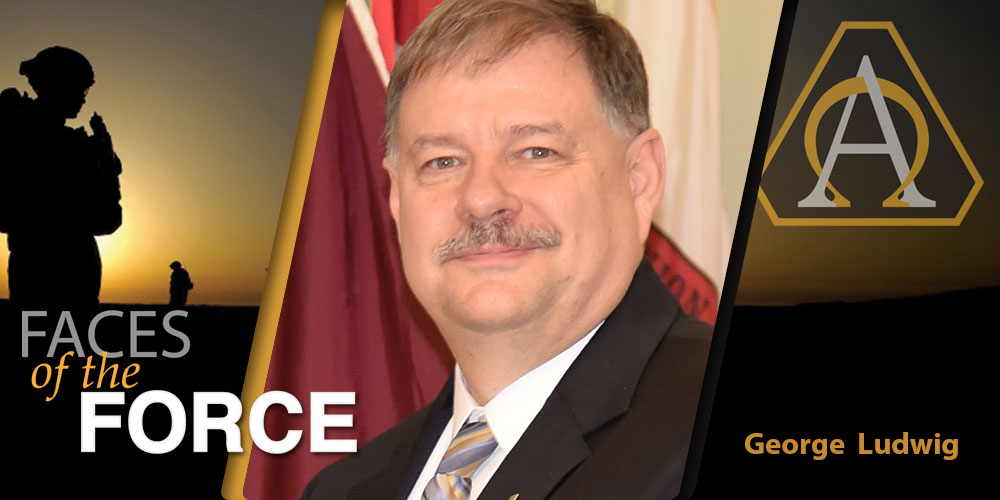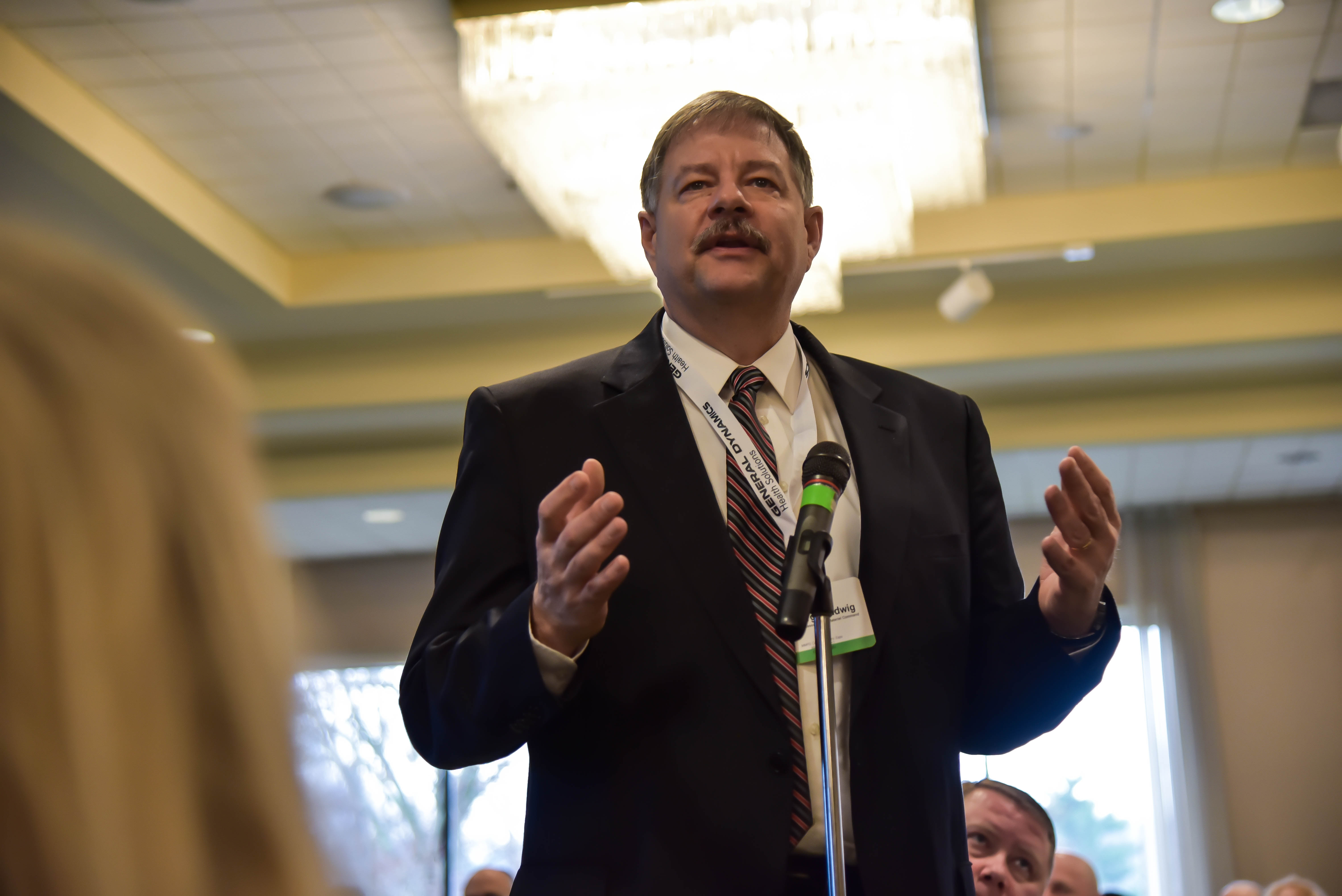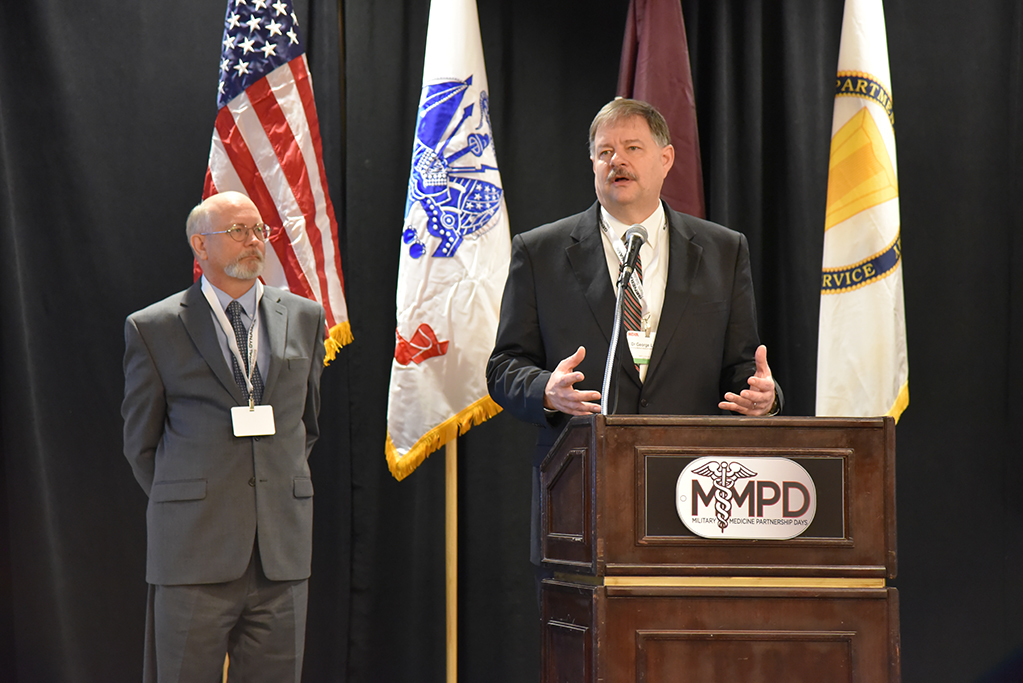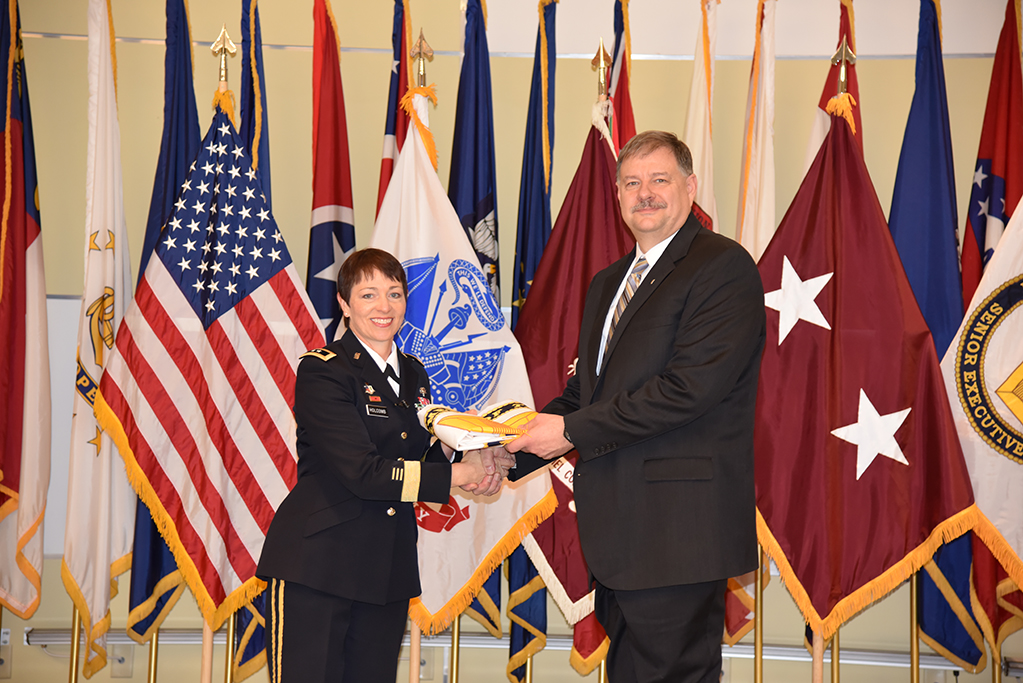
COMMAND/ORGANIZATION: U.S. Army Medical Research and Materiel Command
POSITION AND OFFICIAL TITLE: Principal assistant for research and technology
YEARS OF SERVICE IN WORKFORCE: 23
DAWIA CERTIFICATIONS: Level III in science and technology management and engineering; Level I in program management
EDUCATION: Ph.D. in veterinary science, University of Wisconsin; M.S. in wildlife biology, Colorado State University; B.S. in zoology, University of Maryland
AWARDS: Superior Civilian Service Medal, U.S. Army Medical Research and Materiel Command; Civilian Employee of the Year, Category III, U.S. Army Medical Command; Superior Civilian Service Medal, U.S. Army Medical Research Institute of Infectious Diseases; Achievement Medal for Civilian Service; U.S. Food and Drug Administration’s Commissioner’s Special Citation; Certificate of Appreciation for support of the Joint Program Executive Office for Chemical and Biological Defense and the Critical Reagents Program; Order of Military Medical Merit; Fort Detrick Man of the Year
Managing the frontiers of military medical research
By MS. SUSAN L. FOLLETT
As you might have noticed from his professional information, Dr. George Ludwig has received numerous awards and commendations in his 23-year career. Which does he find the most meaningful? A letter of appreciation from the government of Zaire (now the Democratic Republic of the Congo), thanking him for his work to contain an Ebola outbreak in the early 1990s. “More than the others, that award reminds me why I went into federal service and why I stayed: to give something back. It reinforces the ‘service’ aspect of government service.”
Federal service isn’t the typical career path for those with doctoral degrees in veterinary science. “If you had told me 30 years ago that I’d be working for the Army, I would have said you were nuts,” he conceded. One of his professors at the University of Wisconsin worked with researchers at the U.S. Army Research Institute for Infectious Diseases, a subordinate unit of the U.S. Army Medical Research and Materiel Command (USAMRMC), and Ludwig did a postdoctoral assignment there. “After the postdoc, I became a primary investigator, then a branch chief, and now here I am,” he said.

Dr. George Ludwig addresses the audience at the 2017 Military Medical Partnership Days in Ellicott City, Maryland. (Photo by Melissa Myers, USAMRMC Public Affairs)
Ludwig, who was appointed to the Senior Executive Service (SES) in February, continues a family legacy of federal service: His father, also an SES member, worked for NASA and the National Oceanic and Atmospheric Administration. His wife works for the U.S. Department of Health and Human Services, and his sister, a former Army officer, now works for the U.S. Department of Homeland Security as a Coast Guard officer.
As USAMRMC’s principal assistant for research and technology, Ludwig exercises scientific oversight and management of the Army and DOD medical science and technology programs—budgeted at $1.5 billion in FY16. These programs encompass military operational medicine, combat casualty care, military infectious diseases, clinical and rehabilitative medicine, medical simulation and health information technology, medical chemical and biological defense, and special-interest research programs directed by Congress.
He oversees research conducted within the command’s worldwide laboratory system, which includes six labs in the continental United States (CONUS) and three outside CONUS. “These programs ensure that the Army has the capability it needs to prevent disease and injury and, in the case of illness or injury, to treat the effects of those injuries no matter where or how Soldiers are deployed,” he said.
USAMRMC research focuses on enduring needs—treating combat injuries, for example—and explores ways to apply new technologies. Ludwig cited a handful of new approaches that hold promise for Army medical research and development (R&D), including synthetic biology, which offers ways to correct problems at a basic, cellular level, and biomedical modeling, which can predict system functions better than conventional laboratory experimentation. Also promising are developments in systems biology, which looks at the Soldier as a system of systems and aims to improve system interactions. “Research in all of these areas could mean solutions for problems we’ve long considered intractable, such as post-traumatic stress disorder,” Ludwig said.
Ludwig’s involvement with acquisition started out of obligation: It became a requirement for employment during the early stages of his career. “It was only through years of personal and professional maturation that I came to understand how important a detailed understanding of the acquisition process is to ensuring that I can fully support the Army’s R&D mission,” he said. “The entire reason my position is needed by the Army is to ensure that the warfighter possesses the necessary medical capabilities to fight and win wars. Given the complexity of the DOD acquisition process, it would be impossible to meet that mission without being a part of the acquisition workforce.”

Dr. George Ludwig speaks during the 2017 Military Medical Partnership Days as Dr. Kenneth Bertram listens. (Photo by Melissa Myers, USAMRMC Public Affairs)
Ludwig identified two events in particular that helped shape his understanding of Army acquisition and helped him develop the skills to lead within USAMRMC. First was his decision to seek a broadening personnel assignment out of the medical laboratories and into an R&D oversight position within USAMRMC headquarters. “My laboratory experience provided valuable basic knowledge of the Army’s needs and gave me the opportunity to develop a scientific and professional reputation,” he said. “But by moving to USAMRMC headquarters, I grew to understand the scope of the military medical requirement and was able to put into perspective the purpose of the Army medical laboratories.”
Also important was completing the Sustaining Base Leadership and Management (SBLM) course at the Army Management College. “Attending SBLM helped provide the basis of my understanding of how the Army runs and functions within the broader DOD,” he said. It is essential, he said, to accept difficult assignments and seek out others who are more knowledgeable and experienced. “That means taking broadening assignments and having the confidence to engage in conversation with other leaders.”

Maj. Gen. Barbara R. Holcomb, commander of the U.S. Army Medical Research and Materiel Command and Fort Detrick, presented Dr. George Ludwig with his Senior Executive Service Flag during his SES induction ceremony in February 2017. (Photo by Crystal Maynard, USAMRMC Public Affairs)
He urged others interested in a similar career to take advantage of educational opportunities offered through the military or civilian education system and to attain acquisition certifications and membership in the acquisition workforce and Army Acquisition Corps. “Lastly, and most importantly, exude confidence in all you do without being overconfident,” Ludwig said. “Such confidence sets the stage for open dialogue that serves to build highly effective teams and drive toward success.”
This article will be published in the October – December 2017 Army AL&T magazine.
“Faces of the Force” is an online series highlighting members of the Army Acquisition Workforce through the power of individual stories. Profiles are produced by the U.S. Army Acquisition Support Center Communication and Support Branch, working closely with public affairs officers to feature Soldiers and civilians serving in various AL&T disciplines. For more information, or to nominate someone, please contact 703-664-5635.
Subscribe to Army AL&T News, the premier online news source for the Acquisition, Logistics, and Technology (AL&T) Workforce.







